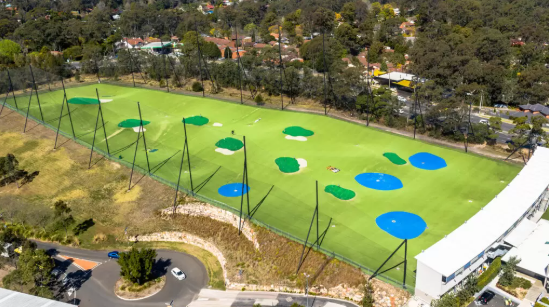The Importance of Golf Netting in Public and Private Courses

Golf is a sport that combines skill, strategy, and calmness, offering enthusiasts a chance to test their abilities while enjoying the beauty of nature. However, as relaxing as the sport may seem, it comes with its own set of safety challenges. One of the most significant concerns is the risk of stray balls, which can cause injury, damage property, or disrupt nearby activities. This is where golf netting, also known as golf barrier netting, plays a crucial role in both public and private golf courses.
In this article, we explore why golf netting is essential, how it enhances safety, and its additional benefits for course managers and players alike.
Safety First: Protecting People and Property
One of the primary reasons golf netting is vital is to ensure safety. Stray golf balls are more than just an inconvenience. They can lead to serious accidents. In public golf courses located near residential areas, roads, or walking paths, a wayward ball can pose a significant risk to passersby and drivers. Even private courses, often situated in scenic locations, may face similar risks when surrounded by homes or shared spaces.
High-quality golf barrier netting acts as a reliable shield, containing balls within the designated play area. This prevents injuries, reduces the likelihood of property damage, and builds trust with neighbouring communities who may otherwise worry about the risks of living near a course.
Enhancing the Player Experience
Golfers of all levels can benefit from the installation of golf netting. Beginners and amateur players, in particular, often struggle with control and precision, making them more prone to hitting balls in unintended directions. Knowing that a robust net is in place provides these players with peace of mind, allowing them to focus on improving their game rather than worrying about the consequences of an offending shot.
For seasoned golfers, golf netting ensures that their practice or game remains uninterrupted. On driving ranges, for instance, nets create a defined boundary, helping players track ball flight and evaluate their swings without worrying about disrupting adjacent play areas.
Regulations and Legal Requirements
Installing golf barrier netting is not just about courtesy it’s often a necessity. Many local councils and governing bodies require golf courses to implement safety measures, including proper fencing and netting, to meet regulatory standards.
Failing to comply with these requirements can result in hefty fines, lawsuits, and even course closures in extreme cases. By investing in high-quality golf netting, course owners can avoid these legal pitfalls while fostering a reputation for responsibility and care.
Protecting the Course’s Investment
Golf courses, whether public or private, are significant investments. From maintaining pristine fairways to providing state of art facilities, course managers spend substantial resources ensuring an exceptional experience for their patrons. However, damage caused by stray balls such as broken windows, dented vehicles, or injured staff can quickly escalate costs and lead to unplanned expenses.
By installing durable and weather-resistant golf barrier netting, courses protect themselves from these risks. Modern netting solutions are designed to withstand harsh conditions, from intense UV exposure to strong winds, ensuring long-term reliability and peace of mind.
Sustainability and Environmental Benefits
Beyond safety, golf netting can contribute to environmental sustainability. In areas surrounded by natural habitats, errant balls can harm wildlife or disrupt ecosystems. Golf barrier netting minimises the environmental impact by keeping balls contained and preventing them from entering nearby forests, lakes, or protected areas.
Additionally, some netting materials are now manufactured using eco-friendly processes, allowing course owners to align their safety measures with broader environmental goals.
Types of Golf Netting and Choosing the Right Solution
The effectiveness of golf netting depends on its quality and installation. There are several types of netting available, each suited to specific needs:
- Permanent Netting: Ideal for long-term installations on golf courses and driving ranges.
- Portable Netting: Suitable for temporary setups, such as events or private practice areas.
- Customised Netting Solutions: Designed to fit unique course layouts or specific challenges.
When choosing a golf netting solution, it’s essential to consider factors like material durability, height requirements, and weather resistance. High-density polyethylene is a popular choice for its strength and UV protection, ensuring it remains effective for years.



